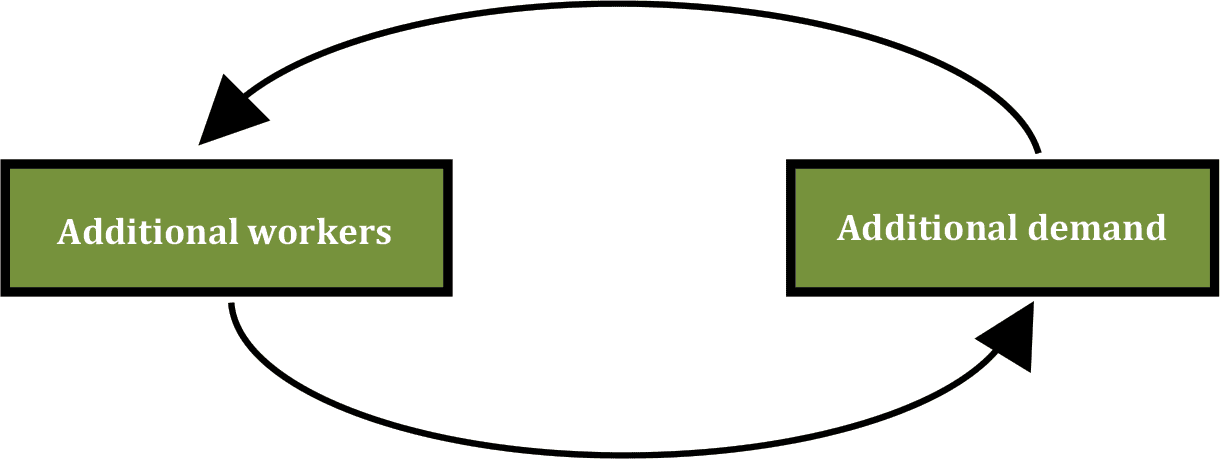As we have already hinted, Keynes’ magic faucet relates to expenses. Significant federal expenditures must first be made and then matters begin to work out, as shown in the following example.
Example
Government expenditures: The first phase
The government borrows money from the central bank in order to employ a group of unemployed laborers (group A) to build a road. With the salary that the unemployed workers receive, they will buy goods in stores and markets. As a result, demand for certain goods in the country will rise. As a result, enterprises will have to hire additional workers and buy additional machinery, and more workers will then be needed to produce the machinery (group B).
Government expenditure: The second phase
Workers in group B who were hired by enterprises to produce additional machinery will also receive salaries, and this will continue to stimulate demand in the economy.
Enterprises will need additional workers (group C) in order to supply the demand:
A cycle of employment and demand will be set into motion, and this will continue until full employment is achieved.
Diagram 11.5
Keynes’s workers-demand cycle



